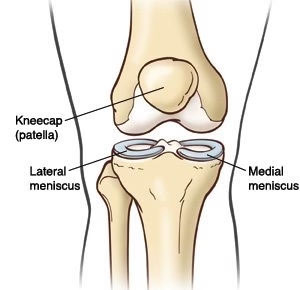
Knee Cartilage – Meniscal and Articular (Smooth)
The knee joint contains two types of cartilage: articular cartilage and meniscal cartilage. Here's a breakdown of each:
1. Articular Cartilage:
Anatomy: Articular cartilage is a smooth, white tissue that covers the ends of the bones within the knee joint. It lines the surface of the femur, tibia, and patella (kneecap) where they come into contact with each other.
Function: Articular cartilage serves as a cushioning and lubricating layer, allowing smooth and frictionless movement between the bones of the knee joint. It helps distribute weight evenly across the joint and absorbs shock during activities such as walking, running, and jumping. Articular cartilage also provides a low-friction surface that reduces wear and tear on the joint over time.
2. Meniscal Cartilage (Meniscus):
Anatomy: The meniscus is a C-shaped piece of fibrocartilage located between the femur and tibia in each knee joint. There are two menisci in each knee: the medial meniscus on the inner side and the lateral meniscus on the outer side.
- Function: The menisci serve several important functions:
- Shock Absorption: They act as shock absorbers, helping to distribute forces evenly across the knee joint during weight-bearing activities.
- Stability: The menisci help stabilize the knee joint by improving the fit between the rounded ends of the femur and the flat surface of the tibia.
- Lubrication: They assist in lubricating the joint surfaces, reducing friction and allowing smooth movement of the knee.
- Load Transmission: The menisci help transmit forces between the femur and tibia, which is especially important during activities involving twisting and pivoting motions.

In summary, both articular cartilage and meniscal cartilage play crucial roles in maintaining the health and function of the knee joint. They work together to provide cushioning, stability, and smooth movement, allowing the knee to withstand the stresses of daily activities and sports. Injuries or degeneration of either type of cartilage can lead to pain, swelling, and decreased mobility in the knee.
